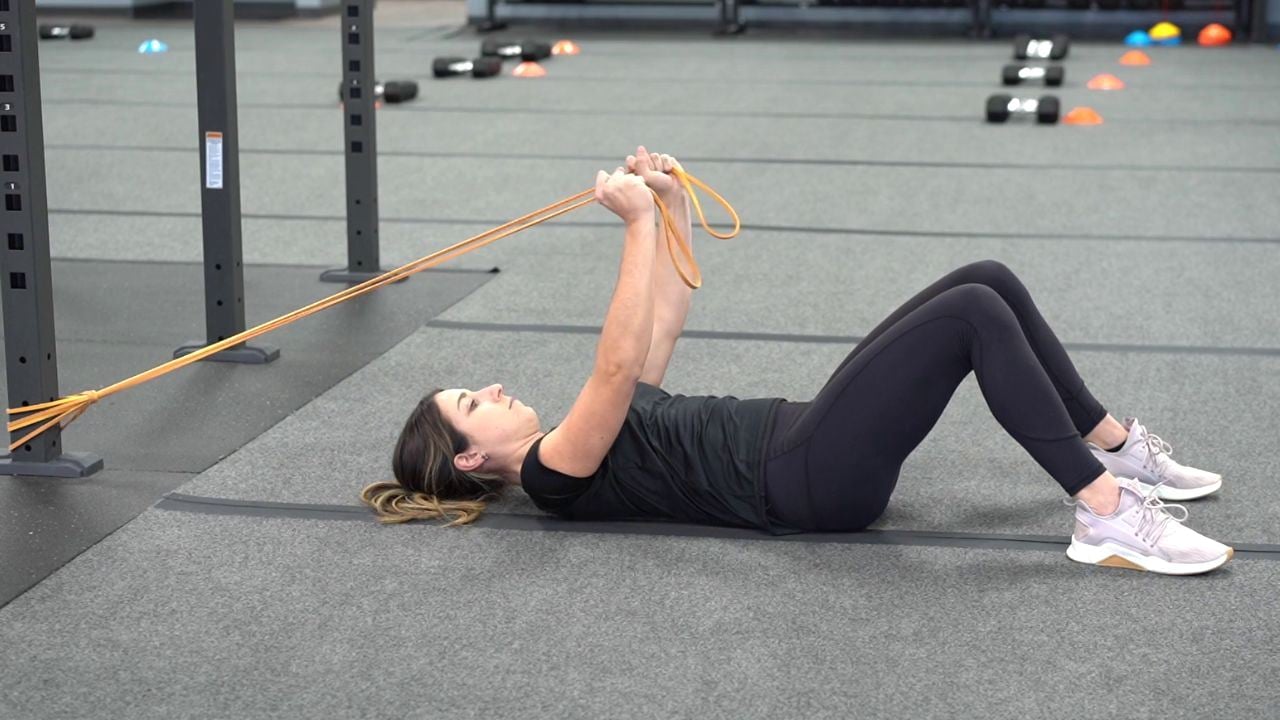Resistance band pullover is a good exercise you can do at home to train your chest and back. It is a variation of the traditional pullover exercises.
This efficient exercise only requires a resistance band to get a full upper-body workout.
It’s a great addition to your fitness routine, especially if you’re looking for a versatile, low-impact exercise that can be performed at home or in the gym.
When I started using it, I was surprised at its versatility. I noticed improved shoulder mobility and a stronger mind-muscle connection in my lats.

Muscles Worked
The resistance band pullover is a compound exercise that works multiple muscle groups, including the back, chest, shoulders and tricep.
- Primary: Latissimus dorsi (lats)
- Secondary: Pectoralis major (chest), Triceps
- Stabilizing: Core muscles, Serratus anterior and deltoids (shoulders)
How To Do Resistance Band Pullover
- Choose a band that makes your muscles work harder but not too much, making it hard to do the exercise correctly.
- Anchor the resistance band securely at a low point.
- Lie down on a flat bench or the floor. Your back should be straight and your feet should be planted firmly on the ground if you are on a bench.
- Grip the resistance band with both hands, holding it overhead.
- The band should be taut, but not too tight. Your hands should be shoulder-width apart.
- Slowly lower your arms back and down. Stretch the band further as you go.
- Bring your arms down in an arc until they are level with your torso or as far as your shoulder flexibility allows.
- Bring your arms back up in an arc over your head to the starting position.
Tips and Form
- Make sure the movement is smooth and controlled. You should also focus on stretching and contracting the muscles.
- Ensure the movement is controlled, and your core is engaged to avoid excessively arching your back.
- Adjust the tension level using different bands with different elastic or tension levels.
- Inhale as you lower the band in an arc behind your head. Exhale as you return to the starting position.
- Make sure the band doesn’t snap back. Control the resistance both on the way down and on the way up.
- Avoid letting your lower back arch away from the bench or floor.
- Make sure the anchor point is secure and the band is attached correctly.
- Do 3–4 sets and 10–12 reps.
Try Our FREE Workout Planner to generate your customized workout plans
Best Variations Band Pullover
We can also perform this exercise in some variations, such as a single-arm resistance band pullover or seated resistance band pullover.
Now, let’s discuss these variations and how to perform them correctly.
Single Arm resistance Band Pullover
Working with one arm at a time allows for a deeper stretch and contraction, maximizing muscle engagement.
Focusing on one side at a time helps both sides of your body grow evenly. This approach is especially helpful for tackling those pesky muscle imbalances that can come up during strength training.
Seated Resistance Band Pullover
- Sit on a bench or a stable surface.
- Extend your legs in front of you.
- Loop the resistance band around your feet and hold one end in each hand
- Perform the pullover motion in an upward position
- Complete desired reps.
Know More Resistance Band Exercises
- Best Resistance Band Chest Exercises
- Resistance Band Back Workouts
- Best Resistance Band Shoulder Exercises
- Resistance Band Trap Exercises
- Best Resistance Band Tricep Exercises
- 10 Best Resistance Band Abs Exercises (With Workout Plan)
- 5 Best Resistance Band Lat Exercises

Manish is a NASM-certified fitness and nutrition coach with over 10 years of experience in weight lifting and fat loss fitness coaching. He specializes in gym-based training and has a lot of knowledge about exercise, lifting technique, biomechanics, and more.
Through “Fit Life Regime,” he generously shares the insights he’s gained over a decade in the field. His goal is to equip others with the knowledge to start their own fitness journey.
